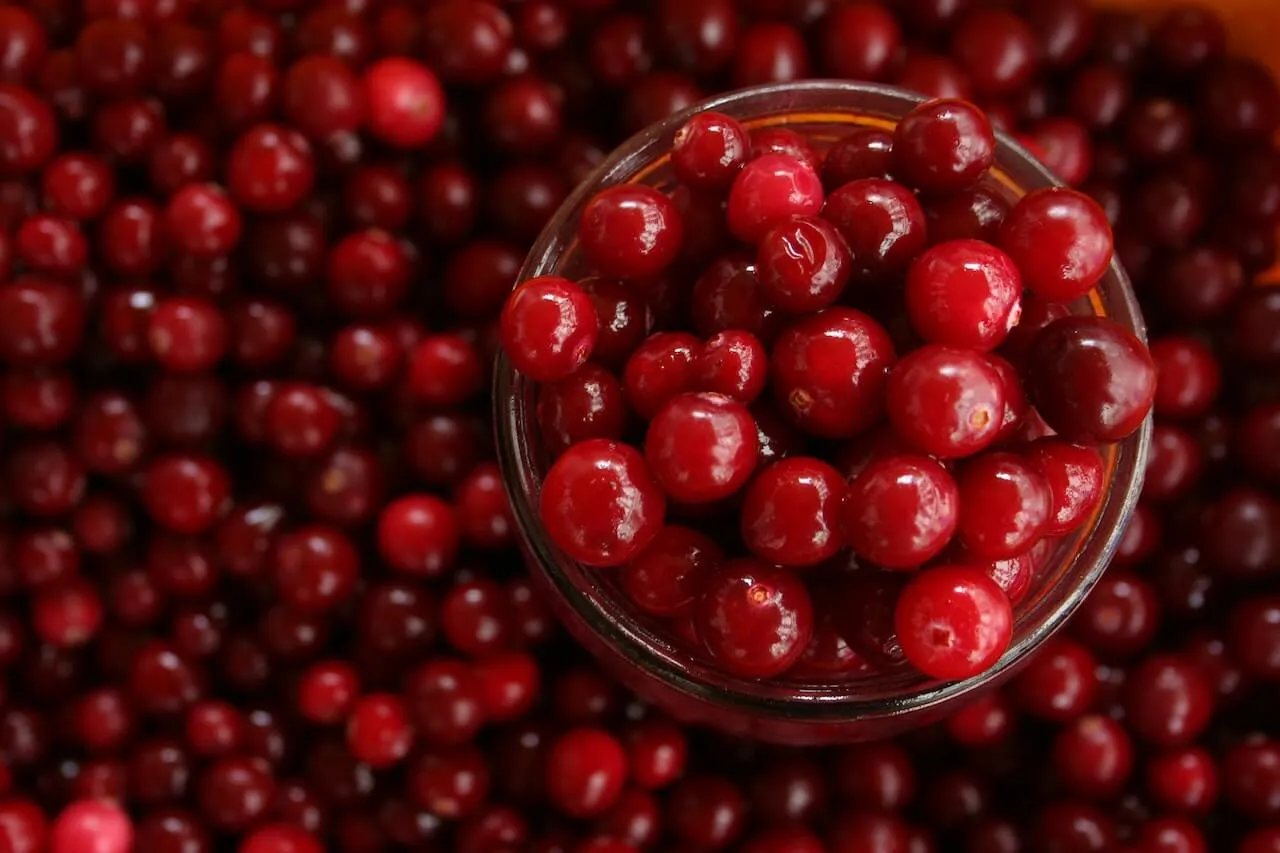Are you looking for the hottest new health food trend? You might add wheatgrass to your shopping list. This microgreen has numerous impressive advantages you’ll love.
Natural practitioners have turned to this plant to detoxify the body, strengthen its defenses, and protect against disease. It also shows promise in treating several disorders.
What is this superfood, and how do you use it? Read on to discover eight surprising wheatgrass benefits for your health.
What Is Wheatgrass?
Wheatgrass is the young shoot of the wheat plant Triticum aestivum.1 It’s relatively easy to grow at home. The method many people use involves placing the seeds in water until they sprout and harvesting the leaves for use.
The young leaves are tough to digest. Although a few people eat them raw, most squeeze the leaves into juice or blend them into wheatgrass powder to use in various smoothies or other recipes. Some believe that wheatgrass shots’ benefits are enough to hold their nose and sip the fluid.
{{mid-cta}}
Wheatgrass Nutrition Facts
Many wheatgrass benefits come from its impressive nutritional profile. Wheatgrass juice is a powerhouse, containing high levels of nutrients necessary for health.
1. Vitamin C
Taking a wheatgrass juice shot daily could shorten your next cold's duration.2 It’s high in vitamin C, a nutrient that boosts your immune system. However, you can’t utilize it effectively once you’re sick; you need it when you first become infected.
Vitamin C is an antioxidant that protects you from damage from smoking, pollution, X-rays, and the sun’s radiation. It also helps form your muscles, collagen, blood vessels, and cartilage. Many doctors recommend getting these nutrients from foods like wheatgrass instead of supplements to protect against overdose and make them more bioavailable.
2. Vitamin A
Vitamin A is crucial for the proper functioning of multiple bodily systems, including vision, immunity, reproduction, and cell growth.3 It helps keep every organ in your body functioning as it should.
Although chlorophyll is the predominant phytonutrient in wheatgrass, it’s also rich in beta-carotene. This substance is considered a provitamin-A carotenoid, meaning your body transforms it into vitamin A after consumption.
3. Vitamin E
Vitamin E is best known for promoting supple hair and skin. For this reason, it plays a starring role in many over-the-counter beauty products and supplements. However, it’s also essential for proper immune functioning, helping you fight off invading bacteria and viruses. It assists with T-cell production, a vital immune cell that devours such germs. Additionally, it widens blood vessels, helping prevent clots.

4. Vitamin K
You don’t want blood clots on an intercontinental flight, but you’d like it if that shaving knick stopped leaking. Wheatgrass also contains vitamin K, which encourages prothrombin production, a protein necessary for healthy blood clotting.
This nutrient also improves bone strength. It helps regulate bone reabsorption, slowing the degeneration that can occur with age.4
5. Chlorophyll
Chlorophyll is a phytonutrient that gives deep greens their signature hue. While some people take it as a supplement, you can get your daily dose by adding a wheatgrass shot to your morning smoothie.
Although the evidence for chlorophyll supplementation is incomplete, those who use it report the following benefits, which have some evidence to support them:5
- Skin healing: Some early studies show chlorophyll may improve acne.
- Red blood cell building: One 2004 study on wheatgrass found it reduced the number of transfusions needed by people with a rare blood disorder.
- Cancer prevention: A 2018 study on mice showed chlorophyll reduced pancreatic tumor size.
- Weight loss: A 2014 study found women taking wheatgrass lost more weight than those who did not.
6. Magnesium
Magnesium plays a role in many bone and muscle functions. Many people add Epsom salts, a form of this mineral, to their bath water to ease soreness and promote relaxation.
The true wonder of this mineral might be its effect on your mind and mental state. One early study suggested supplementation can ease depression symptoms along with a selective serotonin reuptake inhibitor.6
7. Calcium
You probably already know you need adequate calcium for healthy teeth and bones. However, your body is not able to always absorb this nutrient well. It’s best to prevent disorders like osteoporosis by consuming food rich in calcium, not supplements.7 Adding wheatgrass to your diet is an ideal way to meet your recommended daily allowance (RDA).
8. Iron
Popeye might have stayed strong to the finish by eating spinach. However, wheatgrass has nearly as much iron as those leafy greens, making it a valuable addition to your diet. It’s also more absorbable in this form, as supplements may make you nauseous on an empty stomach.
Finally, wheatgrass contains the nine essential amino acids your body can’t produce naturally, making it a fabulous vegan protein source.13
8 Amazing Health Benefits of Wheatgrass
You now know wheatgrass is a nutritional powerhouse. What does all this mean for your health? Here are eight amazing wheatgrass benefits that will have you adding it to your morning smoothie.
1. Antioxidant and anti-inflammatory
Wheatgrass is good for you because of its potent antioxidant and anti-inflammatory properties. Inflammation is a hallmark of nearly every known disease, and increasing levels often worsen your symptoms. Wheatgrass lowers several inflammatory markers, including IL-6 and COX-2, terms you might recognize if you have an autoimmune or chronic disease.8
Antioxidants reduce free radicals, roaming electrons without mates that scavenge your body’s cells for their missing half, causing cellular disruption and disease. These substances provide the missing molecule and whisk these harmful substances out of your body before they can cause dangerous changes.
2. Helps to reduce cholesterol
Your body contains two types of cholesterol: HDL and LDL. HDL is the “good” kind, whereas excess LDL contributes to heart disease and stroke. While the only studies on wheatgrass’ impact on your cholesterol are earlier animal models, their evidence is promising.
3. Can help to prevent cancer
Some of the cellular changes free radicals may spur cancer cell development. The antioxidant properties of wheatgrass may lower your risk.
Wheatgrass may also help people fight cancer. One study showed it could reduce some of the damage to healthy cells caused by chemotherapy.10
4. Can help regulate blood sugar
You know how awful you feel when your blood sugar levels drop too low: shaky, nauseous, and desperate for food. One way to lower the dangers is to shun processed carbs in favor of whole fiber-rich grains.
Wheatgrass contains four grams of filling fiber per person. Although your body doesn’t digest it, your gut microbiome uses it. It slows digestion, maintaining more regular blood sugar levels. It also makes you feel full longer.
Some animal studies supported these statements and found that wheatgrass may help regulate blood sugar levels. In one study, giving wheatgrass to diabetic rats modified levels of certain enzymes that help lower blood sugar levels.14 Another study found that treating diabetic rats with wheatgrass extract for 30 days resulted in decreased blood sugar levels.15 However, more studies are needed to understand how this plant may impact blood sugar levels in human beings.
5. May aid in managing gastrointestinal problems
Everyone has a microbiome, a series of healthy bacteria that help you digest and perform other bodily functions in your intestines. Over time, these colonies can be depleted from various stressors.
Prebiotics refer to a type of fiber that nourishes your intestinal microbiome. Wheatgrass is fiber-rich, and adequate intake may reduce diarrhea, constipation, gas, and bloating often associated with ulcerative colitis.
6. Helps prevent and treat type 2 diabetes
Type 2 diabetes threatens millions of Americans, many of whom don’t know they’re at risk. The filling fiber in wheatgrass reduces your urge to snack on unhealthy foods that may increase your chances of developing disease.
For example, many Americans reach for snacks with processed carbs when their blood sugar drops. This creates a vicious cycle, as bleached flour absorbs like sugar, temporarily raising glucose before bringing it down with a crash and compelling you to snack more. Wheatgrass delivers the fiber and nutrients your body needs to feel sated and stave off cravings.
7. May boost weight loss
Wheatgrass’ filling benefits are good for more than preventing type 2 diabetes. They may also help you shed unwanted pounds. It makes sense; if you snack less, you consume fewer calories.
Furthermore, wheatgrass contains substances called thylakoids. Research found eating plants high in this substance keeps you sated longer.9
8. Can help treat antibiotic-resistant infections
In one study, wheatgrass extracts showed antibacterial activity against Yersinia enterocolitica and Listeria, bacteria notoriously prone to resistance.11
Are There Any Side Effects to Wheatgrass?
Although wheatgrass has impressive health benefits, it may only suit some. Wheatgrass is generally considered safe for those living with celiac disease or gluten sensitivity. However, you should speak with your doctor before using this supplement or stick to products that are certified as gluten-free.12
How to Incorporate Wheatgrass Into Your Diet: 6 Uses
How can you capture the benefits of wheatgrass by adding it to your diet? Here are six wheatgrass uses that can help you take advantage.
Juice
Start your day right by drinking wheatgrass. It’s easy enough to make with a juicer or blender.
If you have a juicer, cut the wheatgrass as small as possible and add it to your device. You won’t need any extra ingredients. If making it in a blender, include a bit of cold water. While you won’t get it lump-free, it will be reasonably smooth.
Smoothies
Wheatgrass is a type of microgreen, so if you’re in the habit of making green smoothies, you can add it to the mix. Use the recipe included below or create your unique blend.

Salad dressings
Wheatgrass adds a wholesome, green-goddess flavor to salads and is easily disguised within the sauce. Here’s a quick recipe that keeps well in your refrigerator:
- ½ cup cilantro
- ½ cup parsley
- 1 tablespoon chopped chives
- 1 tablespoon fresh dill
- 1 shot of wheatgrass juice
- ½ cup mayonnaise
- 1 teaspoon lemon juice
- ¼ teaspoon garlic powder
- Salt to taste
- Additional water for thinning, if desired
Blend all ingredients and chill in the refrigerator for at least an hour before use.
Cocktails or mocktails
Who said every cocktail had to be unhealthy? You can whip up a healthy mocktail using wheatgrass. A simple recipe includes:
- One can Zevia diet ginger ale
- One shot wheatgrass
Serve chilled over ice.
Dips
You can add wheatgrass to multiple dips. While it won’t make potato chips healthier, it will infuse your snack with filling fiber and nutrients that keep you from running to the bowl multiple times. Stir a shot into your favorite ranch or French onion dip the next time you serve it.
Soups
Wheatgrass also adds filling fiber to soups. It tastes best in clear-broth types such as vegetable soup. You could also finely chop the leaves and add them directly to the pot as additional seasoning.
Homemade Wheatgrass Smoothie Recipe
Wheatgrass makes a natural complement to green smoothies. When combined with other superfood ingredients like celery, it gives you a nutritional punch to start your day or replenish your body before sleep.
Here’s a sample recipe you can use any time of day to fill yourself with goodness:
- 3 bunches wheatgrass
- 4 large celery stalks
- 1 medium peeled, sectioned lemon
- 4 medium-cored and sliced Fuji apples
Turn your blender to medium speed. Alternate pressing each ingredient into it, blending until smooth. Pour an 8-ounce serving over ice and enjoy, saving any extra for later use in the refrigerator.
Using a CGM with Signos: Real-Time Data, Backed by AI
Signos pairs a real-time glucose biosensor with AI trained on tens of millions of data points to deliver personalized, science-backed guidance for weight management and health. See exactly how your body responds, and take action.
Learn how it works. Ready to get started? Join now.
Topics discussed in this article:
References
- “Is Wheatgrass Good for You?” Retrieved from: https://www.webmd.com/food-recipes/wheatgrass
- “Does Vitamin C With Zinc Help Combat the Cold?” Retrieved from: https://share.upmc.com/2022/04/does-vitamin-c-combat-the-cold/
- “Vitamin A and Carotenoids.” Retrieved from: https://ods.od.nih.gov/factsheets/VitaminA-Consumer/.
- “Vitamin K and Bone Health.” Retrieved from: https://ods.od.nih.gov/factsheets/VitaminA-Consumer/.
- “The Benefits of Chlorophyll.” Retrieved from: https://www.healthline.com/health/liquid-chlorophyll-benefits-risks.
- Abdi, Leila et. al. “Investigating the effect of magnesium supplement in patients with major depressive disorder under selective serotonin reuptake inhibitor treatment. Retrieved from: https://www.ncbi.nlm.nih.gov/pmc/articles/PMC10041003/.
- “Osteoporosis: Prevention With Calcium Treatment.” Retrieved from: https://my.clevelandclinic.org/health/articles/15049-osteoporosis-prevention-with-calcium-treatment.
- Banarjee, Somesh, et. al. “Wheatgrass Inhibits the Lipopolysaccharide-stimulated Inflammatory Affect in RAW 264.7 microphages”. Retrieved from: https://www.ncbi.nlm.nih.gov/pmc/articles/PMC8320646/
- “The Fat-Blocking and Appetite-Supressing Effects of Thylakoids.” Retrieved from: https://nutritionfacts.org/video/the-fat-blocking-and-appetite-suppressing-effects-of-thylakoids/
- “Extracellular Vesicles Reflect the Efficacy of Wheatgrass Juice Supplement in Colon Cancer Patients During Adjuvant Chemotherapy.” Retrieved from: https://www.frontiersin.org/journals/oncology/articles/10.3389/fonc.2020.01659/full
- Avisor, Adva, et al. “Evaluation of Anthocyanin Content, Antioxidant Potential and Anti-inflammatory Activity of Black, Purple and Blue-Colored Wheat Flour and Wheatgrass Juice Against Common Human Pathogens.” Retrieved from: https://www.ncbi.nlm.nih.gov/pmc/articles/PMC7764458/
- “The Landscape of Celiac Disease Testing and Treatment.” Retrieved from: https://www.beaconlbs.com/blog/the-landscape-of-celiac-disease-testing-and-treatment/
- Prof. Singh, Archana and Thakur, Neha. “Amino Acid and Vitamin Content of Wheatgrass (Triticum Aestivum) Powder.” Retrieved from: https://ijfans.org/uploads/paper/6f5cd75653adf437cf75afed238efe07.pdf.
- Shakya, G., Randhi, P. K., Pajaniradje, S., Mohankumar, K., & Rajagopalan, R. (2016). Hypoglycaemic role of wheatgrass and its effect on carbohydrate metabolic enzymes in type II diabetic rats. Toxicology and industrial health, 32(6), 1026–1032. https://doi.org/10.1177/0748233714545202
- Mohan, Y., Jesuthankaraj, G. N., & Ramasamy Thangavelu, N. (2013). Antidiabetic and Antioxidant Properties of Triticum aestivum in Streptozotocin-Induced Diabetic Rats. Advances in pharmacological sciences, 2013, 716073. https://doi.org/10.1155/2013/716073




.svg)




.webp)





.svg)
.svg)
.svg)
.svg)
.svg)
.svg)
.svg)
